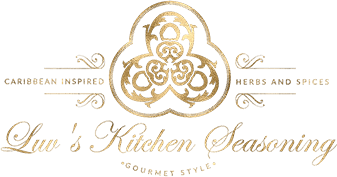
There's something special about the way flavor can change your mood. A sprinkle here, a dash there, and suddenly the whole meal feels elevated. Herbs and spices might seem like a small part of cooking, but they're what bring food to life. They each play their own role - one light and fragrant, the other bold and commanding.
What Are Herbs?
Herbs come from leafy green parts of a plant-usually soft-stemmed varieties like basil, thyme, parsley, mint, or oregano. They're often used fresh or gently dried to add brightness and aroma to your dishes.
Examples of herbs used in Luv's Kitchen blends:
*Thyme - Earthy and warm
*Basil - adds a touch of sweet freshness
*Rosemary - gives that aromatic depth
*Cilantro - vibrant and citrusy
What Are Spices?
Spices come from the roots, bark, seeds, fruits, or flowers of the plant. They're typically dried and ground, bringing more concentrated flavor, heat, and depth. Spices are what give your your meal its character and body-they're bold, warm, and lasting.
Examples of spices featured in Luv's Kitchen blends:
*Paprika - rich and smoky
*Cumin - earthly and comforting
*Turmeric - golden and grounding
*All spice - warm blend of cinnamon, nutmeg and clove in one
*Black Pepper - bold and sharp, versatile
Understanding the difference between herbs and spices helps you build balanced, layered flavor. Herbs add freshness and aroma; spices bring warmth and intensity. Together, they create the kind of flavor that speaks for itself; which is what Luv's Kitchen Seasoning is all about.
When you open one of our blends, you're getting the perfect harmony of both. We carefully balance herbs and spices so you don't have to calculate ratios or measurements.
It's one less thing to think about, and one more reason your meals come out perfectly seasoned every time.


